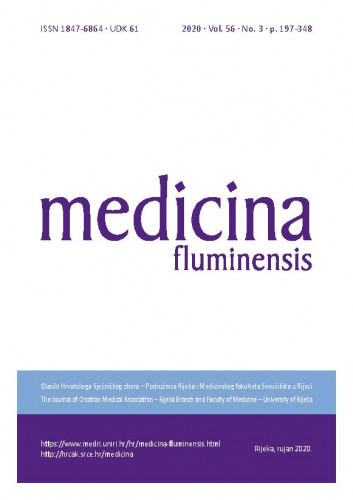Cilj: Anatomska tehnika rekonstrukcije predstavlja zlatni standard pri operacijskom liječenju lezija prednjeg križnog ligamenta. Kod postavljanja femoralnog tunela glavni orijentir predstavlja lateralni interkondilarni greben. Greben se nalazi uz prednji rub hvatišta ligamenta i tuneli se postavljaju ispod njega, u centar hvatišta ligamenta. Cilj ove studije je opisati položaj grebena u odnosu na intaktno femoralno hvatište. Materijali i metode: U studiji je korišteno 10 svježe smrznutih kadaveričnih zglobova koljena. Nakon što je uklonjen medijalni kondil femura, vizualno i uz palpaciju analizirano je područje femoralnog hvatišta ligamenta, i to najprije uz očuvan bataljak prednjeg križnog ligamenta, a zatim nakon uklanjanja čitavog hvatišta. Rezultati: Uz održani ligament, u 70 % preparata niti jedan dio lateralnog interkondilarnog grebena nije bio vidljiv izvan hvatišta. U 20 % preparata greben je bio vidljiv samo iznad posterolateralnog snopa prednjeg križnog ligamenta. Nakon što smo odstranili sva vlakna hvatišta prednjeg križnog ligamenta, u jednom preparatu nismo sa sigurnošću mogli odrediti postojanje grebena. Zaključak: U 90 % ispitivanih preparata lateralni interkondilarni greben bio je unutar hvatišta prednjeg križnog ligamenta. Navedeno bi trebalo uzeti u obzir prilikom anatomske rekonstrukcije ovog ligamenta.; Aim: The lateral intercondylar ridge (LIR) represents the main bony landmark for determining the ACL femoral footprint and for placing the tunnel in the center of the native femoral footprint below the LIR. This study aimed to describe the relationship between the LIR and the intact femoral insertion of the anterior cruciate ligament. Materials and Methods: Ten fresh-frozen, cadaveric knee specimens were obtained for this study. The medial femoral condyle was removed with the aim of finding any protrusion or ridge on the medial wall of the lateral femoral condyle. The exposed areas were carefully analyzed, visually and by palpation. Analyses were performed with ACL stump and after removing the whole ACL from the femoral insertion. Results: In 70% of specimens the ridge was not visible while the ligament was attached to its femoral insertion. In 20% of specimens the ridge was observed outside the fibrous insertion, but only above posterolateral bundle. After removing all ligament fibers in one specimen we could not find bone ridge. Conclusion: In 90% of specimens the LIR was an integral part of the femoral insertion. This observation must be taken into account during ACL reconstructive surgery.
Odnos lateralnog interkondilarnog grebena i hvatišta prednjeg križnog ligamenta : kadaverična studija = Relationship between the lateral intercondylar ridge and intact femoral insertion of the anterior cruciate ligament : cadaveric study / Leo Gulan, Tamara Šoić-Vranić, Ivana Marić, Romana Jerković, Gordan Gulan.
Sažetak
Dio od

 Medicina Fluminensis : glasilo Hrvatskog liječničkog zbora - Podružnica Rijeka i Medicinskog fakulteta Sveučilišta u Rijeci = the journal of Croatian Medical Association - Rijeka Branch and Faculty of Medicine - University of Rijeka : 56,3(2020) / glavni i odgovorni urednik, editor-in-chief Saša Ostojić.
Medicina Fluminensis : glasilo Hrvatskog liječničkog zbora - Podružnica Rijeka i Medicinskog fakulteta Sveučilišta u Rijeci = the journal of Croatian Medical Association - Rijeka Branch and Faculty of Medicine - University of Rijeka : 56,3(2020) / glavni i odgovorni urednik, editor-in-chief Saša Ostojić.